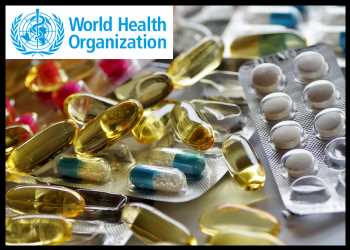WHO Publishes Model Lists Of Essential Medicines
The World Health Organization has published the new editions of the Model Lists of Essential Medicines (EML) and Essential Medicines for Children (EMLc).
The latest update includes important new medicines for the treatment of multiple sclerosis, cancer, infectious diseases, and cardiovascular conditions, among others.
WHO said that the updated Model Lists aim to facilitate greater access to innovative medicines that show clear clinical benefits. These treatments could have a very large public health impact globally without jeopardizing the health budgets of low- and middle-income countries, it added.
“For over 40 years, countries all over world have relied on the WHO Essential Medicines List as a definitive, evidence-based guide the most important medicines for delivering the biggest health impact,” said WHO Director-General Dr Tedros Adhanom Ghebreyesus, . “Rising prices and supply chain disruptions mean that all countries now face increasing problems in ensuring consistent and equitable access to many quality-assured essential medicines. WHO is committed to supporting all countries to overcome these obstacles to increase access with equity.”
For the 2023 update, the WHO Expert Committee on Selection and Use of Essential Medicines considered 85 applications, encompassing more than a hundred medicines and formulations. The recommended changes bring the total number of medicines on the EML and EMLc lists to 502 and 361, respectively.
New medicines listed for infectious diseases include ceftolozane + tazobactam, a ‘reserve’ group antibiotic effective against multi-drug resistant bacteria, including difficult-to-treat infections caused by carbapenem resistant Pseudomonas aeruginosa; pretomanid for treatment of multidrug-resistant or rifampicin-resistant tuberculosis; ravidasvir (to be used in combination with sofosbuvir) for the treatment of chronic hepatitis C virus infection in adults; and monoclonal antibodies for Ebola virus disease.
Two new cancer treatments have been added to the list: pegylated liposomal doxorubicin for Kaposi sarcoma and pegfilgrastim to stimulate production of white blood cells and reduce the toxic effect of some cancer medicines on the bone marrow.
The updated Essential Medicines Lists include 24 new medicines for adults and 12 new medicines for children and specify new uses for 16 already-listed medicines. New formulations of 19 medicines on the EML and 48 medicines on the EMLc have been added. The changes recommended by the Expert Committee bring the number of medicines deemed essential to address key public health needs to 502 on the EML and 361 on the EMLc.
WHO noted that while these numbers may seem high, they are only a small proportion of the total number of medicines available on the market.
Source: Read Full Article

